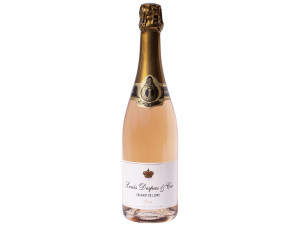You have no items in your shopping cart.
Wine Crémant-de-Loire
The Crémant de Loire appellation refers to sparkling wines made according to the traditional method, which consists of a second fermentation in the bottle, as well as maturation on the lees, which must last for at least nine months. Crémant de Loire is most often white, but it also exists in a rosé version. Read more on Crémant-de-Loire
-
Top Selling
-
Top Selling
-
Top Selling
- -10%
- -21%
- -21%
- -20%
- -20%
- -15%
Appellation Crémant-de-Loire
The history of Crémant de Loire
The culture of the vine is part of the history of the Loire Valley. The famous chateaux of the Loire where the kings of France lived attest to the interest of the region. The vine was already present here in ancient times, imported by the Romans. It was then developed by the monks of the abbeys during the Middle Ages.
During the 16th and 17th centuries, the Loire was a formidable tool for trade, as it allowed everything to be transported and to reach the ocean. From there, trade continued with foreign countries, particularly the Dutch. White wine was already highly prized, but it was not until the early 19th century that bubbles became all the rage. There was already a process for creating bubbles, but they were crude and the wine was hardly appreciated. Now the bubbles are very fine, thanks to the principle of second fermentation.
It was a man named Ackermann who began to develop production and trading in 1811. Wine houses specialised in Crémant de Loire and, with the arrival of the railway, sales soared in the second half of the 19th century.
It was not until 1975 that the Crémant de Loire obtained its AOC. It must be made with Chenin for the white and Cabernet Franc for the rosé.
The terroir of Crémant de Loire
.the vineyards of Touraine, Anjou and Saumur. The terroir runs along the Loire and its tributaries: the Cher, Indre and Vienne rivers. Over the two hundred kilometres it covers, it passes through 318 communes.
Crémant de Loire is mainly produced in the Saumur region. The tuffeau limestone is the ideal material for digging the galleries where the wine is made and stored.
In addition to the two main grape varieties, chenin and cabernet blanc, others are allowed: chardonnay for the white, cabernet-sauvignon, grolleau (black and grey), pineau d'aunis and pinot noir, for the Crémant de Loire rosé. The diversity of soils due to the large area covered by the appellation, as well as the number of authorised grape varieties create wines that are very different from each other.
The Crémant de Loire, in white or rosé
Whether you choose your white or rosé Crémant de Loire, it is best to drink it young, as it is not considered a wine for ageing.
The white Crémant de Loire
The white Crémant de Loire offers a pale or less pale yellow coat depending on its geographical origin. It can be embellished with golden reflections, and even sometimes silver. The nose of white is often complex. There are white flowers, fruits with white or yellow flowers, as well as dried fruits. Its palate is ample and generous, always fresh and fruity.The Crémant de Loire rosé
The colour of the Crémant de Loire rosé varies according to its terroir of origin. The palest wines come in varying shades of salmon, while wines with a deeper colour take on the colour of raspberry or cherry. Rosé smells of red fruits, redcurrant, strawberry and raspberry. Its mouth is round and fresh.Crémant de Loire is your best ally for the aperitif, thanks to its sparkling freshness. You can serve the white with fish and the rosé with white meats. Crémant de Loire is also ideal for dessert, to accompany a raspberry tart or an apple crumble.
Vallée de la Loire appellations




























 TWIL - Achat de Vin
TWIL - Achat de Vin


